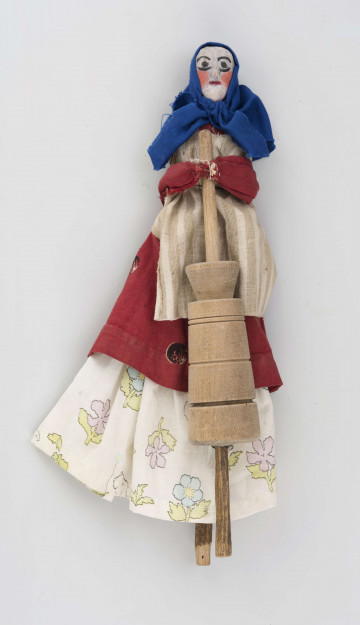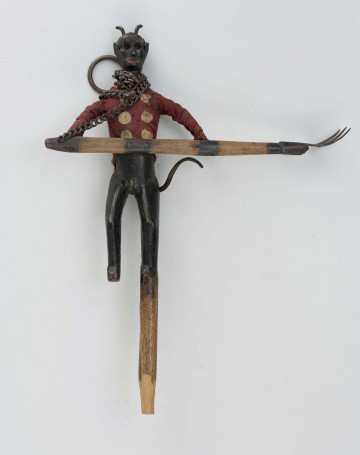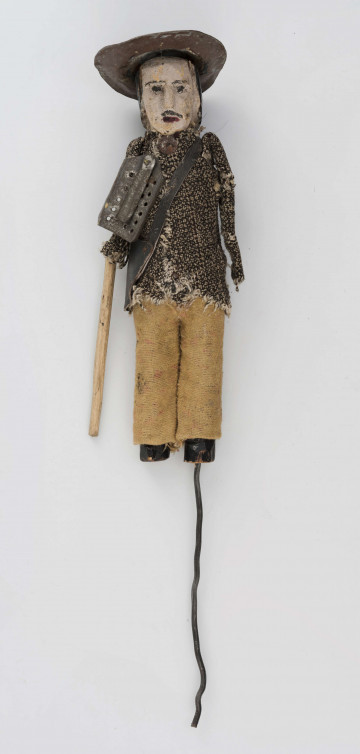
‘Witch’ puppet from the Nativity scene
1901 — 1920
National Museum in Lublin
Part of the collection: Folk craft of the Lublin Region (19th/20th c.)
Carol singers were known in many European countries as early as in the Middle Ages. The first references to Polish carolers come from the 16th century. In the folk tradition, Christmas celebrations lasted until Epiphany. Days and evenings passed in relaxation, singing carols together, meetings and visits, refreshments and games. On such ‘generous days’, and also later (until 2 February, the feast of Our Lady of Thunder), carol singers came to the houses in groups of children and young people in disguises and with various props, including a nativity scene (see E/316/ML).
Folk nativity scenes took the form of a portable box or house with a pitched roof, sometimes covered with straw or shingles, but they also resembled the façade of a church, consisting of an open ground floor between two turrets. A star was stuck on the roof and inside were figures made of wood and dressed in cloth or cut out of plywood and covered with coloured paper (see E/16914/ML). There were two types: with figures permanently fixed to the model of a house or with movable puppets moved by two or three carol singers-actors. The nativity play was often accompanied by violin and harmony. It was a joint play of actors and audience. The carol singers had an opportunity to present their acting skills and ingenuity in making costumes and accessories. The audience, children and adults alike, looked forward to their arrival each year and followed the stories with bated breath (see 16911/ML).
At the end of the performance, the carol singers wished the hosts and the guests present in their homes well. All the wishes that were uttered had a magical meaning and were perceived as having causal powers. Carol singers received donations of money and festive food (including specially baked rolls called 'szczodrak' or sometimes a piece of sausage, bacon, Christmas cake, apples, nuts), because the ritual of carol singing involved an exchange of gifts. They were welcomed with hospitality, as they were believed to bring luck to the house and all its inhabitants. The carol singers would leave with a loud message of thanks and congratulations to their hosts.
Author / creator
Dimensions
cały obiekt: height: 33,5 cm
Object type
puppet
Technique
own
Material
wood, paint
Creation time / dating
Creation / finding place
Owner
The National Museum in Lublin
Identification number
Location / status

1901 — 1920
National Museum in Lublin

1901 — 1920
National Museum in Lublin

1880 — 1910
National Museum in Lublin
DISCOVER this TOPIC
Museum of King Jan III's Palace at Wilanów
DISCOVER this PATH
Educational path